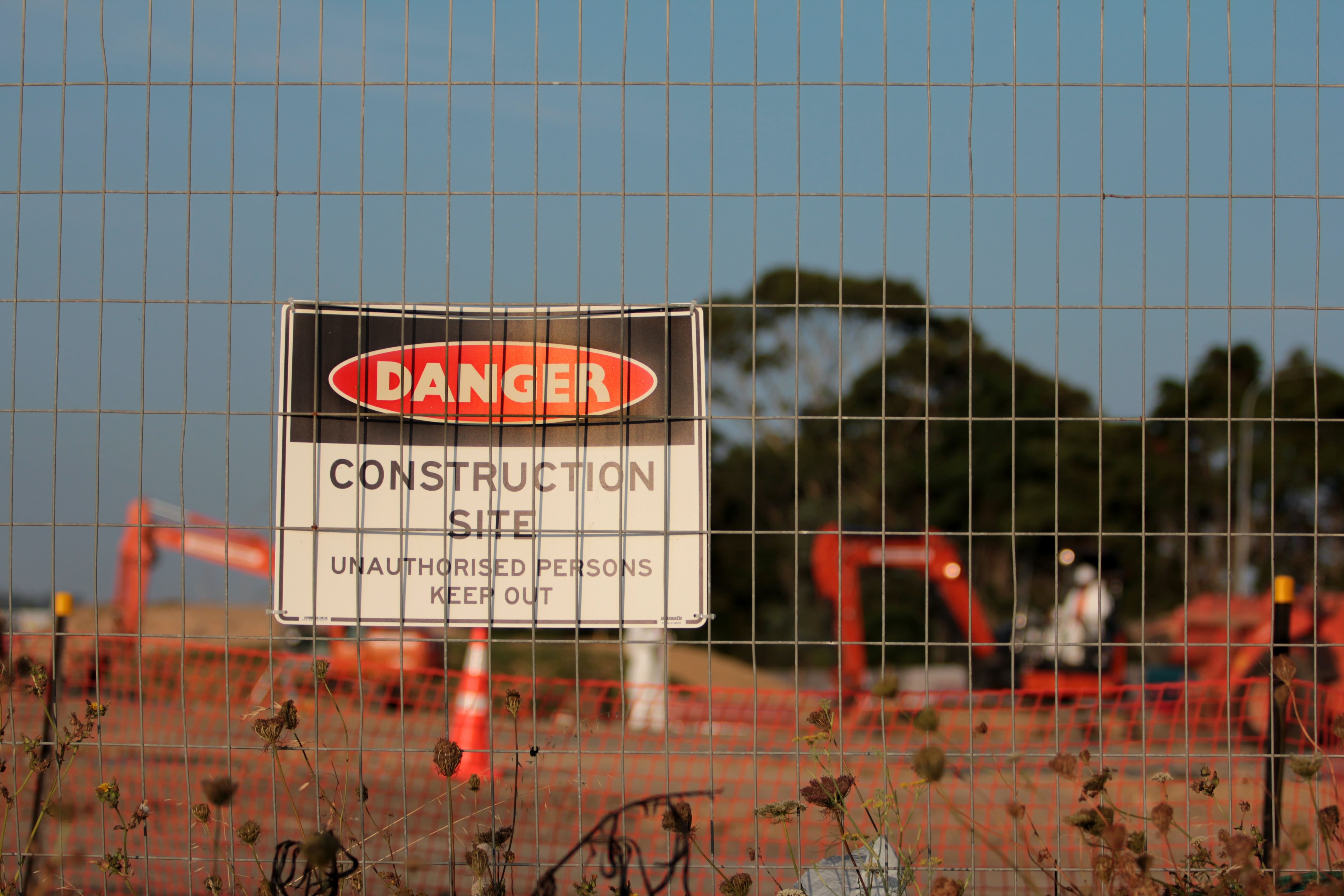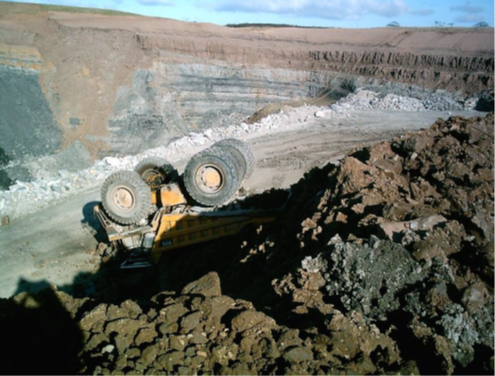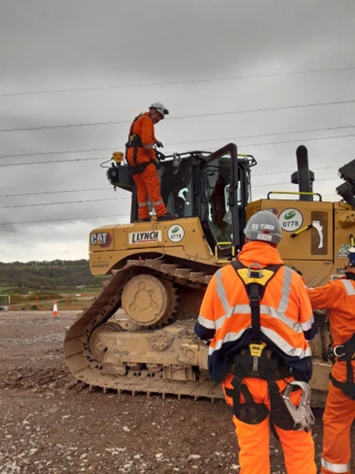How to Manage Mobile Plant Safety
As leaders in health and safety training and consultancy, we are well versed in the risks associated with mobile plant in the workplace. In 2022, the HSE reported that 22 people were killed after being struck by a moving vehicle and 15 were killed after coming into contact with moving machinery.
In environments where there is mobile plant vehicles and equipment, it is important that site design takes into account the operation of such equipment – and pedestrians on site. In this article – we highlight important regulations, requirements and what can be done to ensure workplaces where mobile plant is operated remain as safe as possible.
What is mobile plant?
Mobile plant is a term used to describe equipment that is used for earthmoving, excavating, lifting or suspending loads or elevating platforms. Working with or near this type of mobile plant equipment is high risk – and site managers and employers should take care to ensure the safety of employees, the public and any other persons in the vicinity of this type of equipment.

What are the safety regulations and requirements related to mobile plant?
Since 1995 all new plant (equipment) must meet the health and safety requirements of the Supply of Machinery (Safety) Regulations. In addition, it is a statutory requirement to include the Provision and Use of Work Equipment Regulations (PUWER) – this applies to all work equipment including mobile equipment in all workplaces.
Mobile plant related to lifting loads also need to consider the Lifting Operations and Lifting Equipment regulations (LOLER) – regulations specifically designed to deal with the risks that arise from equipment used to lift loads.
Does mobile plant use require a risk assessment?
Yes. The Management of Health and Safety at Work regulations require that those responsible for sites with mobile plant equipment conduct a risk assessment.
The risk assessment should be undertaken to identify hazards associated with the use of mobile plant equipment. Management, employees and safety representatives should all be involved in the risk assessment.
What safety procedures can be put in place to reduce risks associated with mobile plant?
Where there is mobile plant equipment – traffic rules should be established, as part of a safe system of work, to reduce the risk of equipment to pedestrians.
In addition – there are 3 other key areas to consider:
- Safe Workplaces
- Safety Mobile Plant
- Safe Mobile Plant Operators and Operations
Safe Workplaces
When it comes to ensuring a safe workplace – site design needs to consider mobile plant equipment. This will help to prevent pedestrians coming into contact with the area of operation of mobile plant.
In addition to site design – practical measures should be considered, to make sure pedestrian routes are always kept separate from machinery. This may include signs, one-way systems, exclusion zones and barriers.

Safe Mobile Plant
Mobile equipment should only be used it if it fit for purpose, and safe for the workplace and conditions. Equipment and machinery should also be inspected, tested, maintained and comply with any OEM recommendations and applicable statutory requirements and best practice guidelines.
To ensure mobile plant is safe to use throughout the duration of a project – a programme of pre-use checks should also be implemented, as well as routine servicing and inspections in line with manufacturer instructions. Employers and site managers also need to ensure that there is a clear process and system in place for reporting any issues with mobile plant equipment such as defects.
Safe Mobile Plant Operators and Operations
For safe mobile plant operators and operations – all those who use equipment need to be trained and competent for their role. In the UK there are a few recognised competence schemes that provide training programmes and assessment.
All mobile plant operators should be familiar with the machine they are due to operate, as there can be differences in controls, layout and the way the machinery works between manufacturers.
The health of operators is also important. Those who use mobile plant need to have the appropriate level of fitness to operate equipment.
To ensure operations remain as safe as possible – employers and site managers should put measures such as effective supervision, communication and entry procedures in place.
And rescue plans should also be in place in the event of an accident occurring on site, to ensure workers can be evacuated as safely as possible.
Health and Safety at Work Act
Section 2 of the act details general duties of employers to their employees which includes:
- Provide a safe place of work
- Provide safe access to a place of work
- Develop safe systems of work that are reasonably practical, safe and without risk
- Provide training, information and supervision
- Provide and maintain PPE
- Provide and maintain suitable welfare facilities
In addition, under section 7 of the act - general duties of employees, the following points apply:
- Follow safe systems of work
- Comply with company policies and procedures
- Wear PPE at the appropriate times
- Be aware of own acts or omissions
- Not to interfere with equipment/safety devices provided for H&S purposes
Quarry Regulations - Escape and Rescue Facilities
Many mobile plant equipment is found in quarries and Regulation 15 of the Quarries regulations requires the operator to ensure the provision of adequate means of escape and rescue in the event of danger. Risk assessments should indicate the emergencies which might arise, and the action and equipment required to deal with them.
Under this regulation, the operator must ensure that:
- Adequate means of escape and rescue are provided and maintained so as to permit persons in the quarry to leave the quarry promptly and safely in the event of danger.
- Adequate means of communication and warning are provided to enable assistance, escape and rescue operations to be launched at once when required.
- Written instructions concerning the use of emergency equipment and the action to be taken in the event of an emergency at or near the quarry are prepared.
- Persons at work at the quarry are trained in appropriate action to be taken in the event of an emergency.
- Rescue equipment is provided at readily accessible, appropriately sited and clearly sign-posted places and kept ready for use.
Work at Height Regulations
Mobile plant can often be huge and access and egress to the cab may effectively mean operators are working at height. The Work at Height Regulations 2005 are applicable to all work at height where there is a risk of a fall that could cause injury. The regulations also state that there must be a specific rescue plan and adequate resources in place for anyone working at height. The requirements needed to safeguard the rescuers from falling off the machine also fall under the work at height regulations thus ensuring fall restraint is needed by rescue teams.
In the UK falls from height account for a quarter or all deaths in the construction and manufacturing industries. There are also many serious injuries sustained, often leading to permanent disabilities as a direct result of these falls. These accidents or incidents occur across a wide range of activities from simple inspections / major repairs and rescue situations. This can be prevented with good levels of planning, preparation, and controls.
Emergency Response - Rescue / extraction of drivers from the cab of a mobile plant machine
All personnel involved in providing rescue in the event of an incident occurring, must be fully trained.
It is important rescue teams have plans and established emergency arrangements for retrieving casualties from mobile plant cabs. And that they understand where to place anchor points to enable emergency extraction of a casualty/ties. It is also vital to ensure the safeguarding of rescuers when carrying out rescue and that they are aware of the equipment available and know how to use it in the event of an incident.
The following equipment are examples that could be available on site in the event of an emergency.
- Work positioning belt/lanyard x 2 (2)
- Rescue basket stretcher (3)
- Four-point lifting bridle for rescue stretcher
- Automotive buckle and strap for rescue stretcher
- Vehicle stretcher attachment (4)
- Window breaker
- Emergency blankets
- Torch
- Seat belt cutter
- A means of identifying an appropriate landing area for Air Ambulance if required
This equipment must be inspected monthly, and records maintained using the appropriate reporting process.
Ask yourself this question - if this happened on your site, could you confidently ensure that any injured persons can be treated and recovered from the vehicle and can be transported from the operational void?

Training, Risk Assessments and Consultancy
MRS Training & Rescue have the experience to support employers, site managers and safety personnel responsible for managing a site where mobile plant will be used. From completing risk assessments to consultancy in site design and safety measures, through to training rescue teams and also providing emergency rescue cover ourselves, we can provide a wide range of services. Contact us to learn more.





